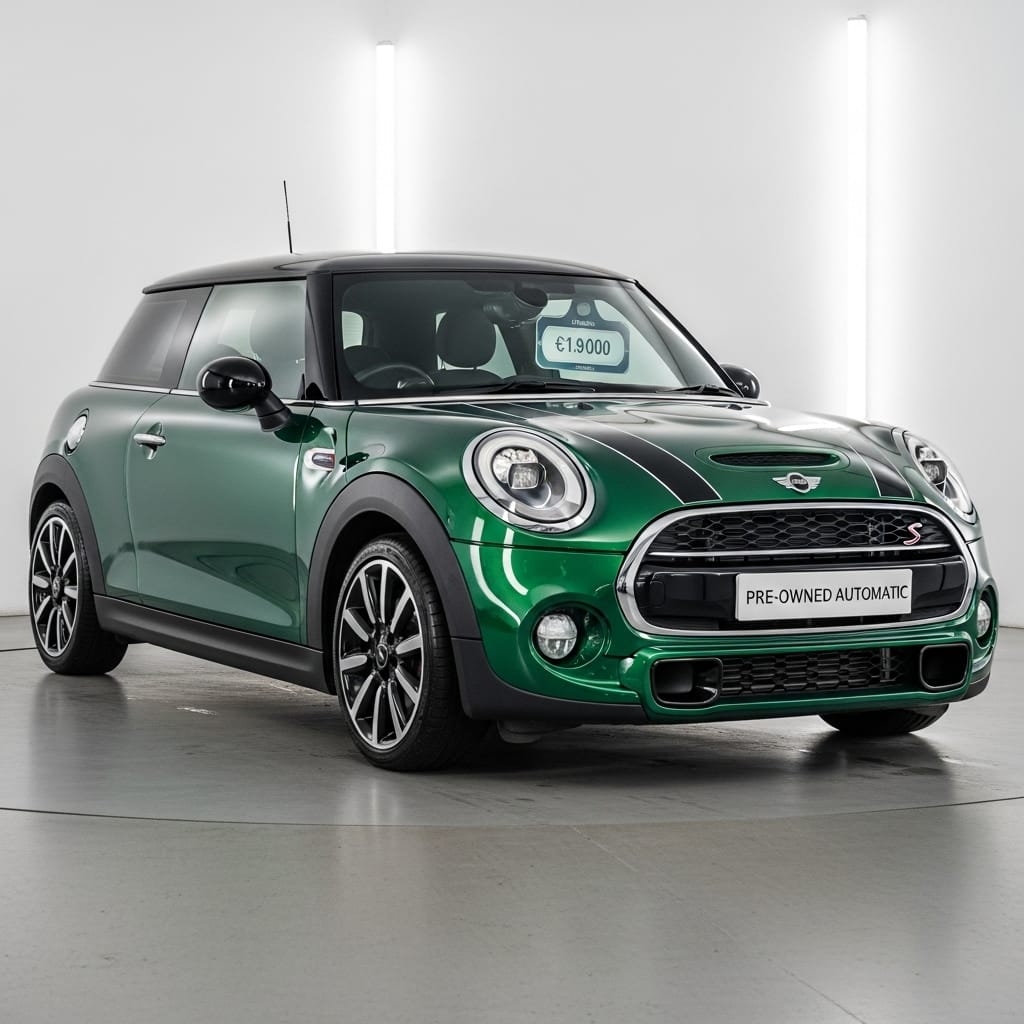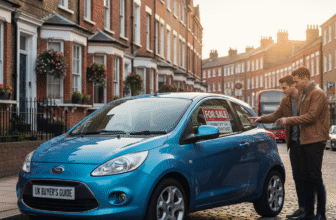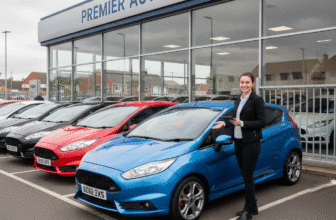
The Thinking Person’s Guide to Finding an Automatic Mini for Sale in the UK
The Mini. It’s more than just a car; it’s a British institution, a cultural icon, and a byword for go-kart handling and cheeky charm. For decades, the purist’s choice was the manual gearbox, a direct connection to the car’s spirited soul. But times change, our roads get busier, and the desire for a more relaxed, convenient driving experience has never been higher. Enter the automatic Mini – a proposition that marries the quintessential character of the brand with the effortless ease of a two-pedal setup. If you’re currently scrolling through listings for an “automatic Mini for sale,” you’re part of a rapidly growing club. But this journey requires more than a simple click and buy. It demands knowledge, a keen eye, and an understanding of what lies beneath that iconic bonnet.
This is not just another buyer’s guide. This is a deep dive into the world of the automatic Mini, from the quirky classics of yesteryear to the sophisticated modern machines gracing showrooms today. We’ll unravel the different types of automatic gearboxes Mini has used – some to be embraced, others to be wary of. We will explore the various models to help you find the perfect fit for your lifestyle and, crucially, we’ll arm you with the essential checklist to ensure your chosen Mini is a future classic, not a future catastrophe. So, grab a cup of tea, settle in, and let’s navigate the exciting road to owning the perfect automatic Mini.
A Tale of Two Gearboxes: The Classic Mini vs. The Modern MINI
Before we delve into the specifics of the BMW-era MINIs that dominate the current market, it’s worth a nod to their ancestor. The original classic Mini was, very rarely, available with an automatic transmission. Developed by Automotive Products (AP), it was a surprisingly complex four-speed automatic for its time, squeezed into the already tight engine bay. Finding one today is like discovering a rare fossil. They are charming, wonderfully quirky, and a true talking point at classic car shows. However, they are a specialist proposition. Parts are scarce, and expertise is even scarcer. For the average buyer seeking daily usability, the story of the automatic Mini really begins in 2001 with the birth of the new MINI under BMW’s stewardship.

Decoding the Transmissions: Not All Automatics Are Created Equal
This is arguably the most critical part of your buying journey. The type of automatic gearbox fitted to a Mini dramatically affects its driving feel, reliability, and long-term running costs. Understanding the differences is paramount.
Generation 1 (R50/R52/R53, 2001-2006): The Age of the CVT
When the new MINI burst onto the scene, the non-supercharged One and Cooper models (R50 Hatch and R52 Convertible) were fitted with a Continuously Variable Transmission, or CVT. Often referred to as a “stepless” gearbox, a CVT doesn’t have traditional gears. Instead, it uses a system of belts and cones to provide a seamless wave of acceleration. In theory, this is great for smoothness and efficiency.
However, the CVT fitted to these early MINIs has, over time, developed a notorious reputation for failure. The driving experience can feel a little disconnected, with the engine revs sometimes seeming unrelated to the road speed – a characteristic ‘droning’ that not everyone enjoys. More worryingly, they are prone to internal component wear, leading to juddering, slipping, or complete failure. A replacement or specialist rebuild can cost thousands of pounds, often exceeding the value of the car itself. For this reason, unless you find a low-mileage, impeccably maintained example with proof of a recent gearbox overhaul, a first-generation automatic Mini One or Cooper is a significant gamble. It’s a classic case of ‘buyer beware’.
There is a silver lining for this generation, however. The more powerful, supercharged Cooper S models (R53 Hatch and R52 Convertible) were not fitted with the CVT. Instead, they received a much more robust and conventional six-speed torque converter automatic gearbox, sourced from Japanese specialist Aisin. This transmission is far more reliable and offers a more engaging drive, with distinct gear shifts and a manual override function. If your heart is set on a first-generation car, an automatic Cooper S is by far the safer and more enjoyable bet.
Generation 2 (R56/R55/R57 etc., 2007-2014): A Welcome Return to Convention
Learning from the experience of the first generation, BMW wisely equipped the second-generation range of MINIs with a conventional automatic gearbox across the board. The problematic CVT was dropped entirely. All automatic models, from the humble Mini One to the fiery John Cooper Works, received a refined version of the six-speed Aisin torque converter automatic. This was a game-changer for the automatic Mini’s reputation.
This gearbox is generally considered to be reliable, smooth, and well-matched to the car’s punchy engines. It provides a crisp and responsive driving experience that feels far more connected than the old CVT. Regular maintenance is still key – a gearbox oil and filter change around the 60,000-mile mark is highly recommended, even if Mini called it ‘sealed for life’. A second-generation automatic Mini often represents a sweet spot in the used market, offering a modern driving experience and improved reliability at a more accessible price point than the current models.
Generation 3 (F55/F56/F57 etc., 2014-Present): The High-Tech Era
With the launch of the third-generation Mini, the technology took another leap forward. Most petrol models, including the One, Cooper, and Cooper S, began to be fitted with a seven-speed dual-clutch transmission (DCT), sometimes marketed as a Steptronic DCT. A DCT works like two manual gearboxes in one, with one clutch controlling the odd gears and another controlling the even gears. This allows for lightning-fast, almost imperceptible gear changes and improves fuel efficiency.
The driving experience with the DCT is sharp and sporty, feeling very modern and efficient. It’s particularly satisfying when using the steering wheel-mounted paddles (where fitted). For diesel models, and the larger Countryman and Clubman models (especially those with ALL4 all-wheel drive), a more traditional eight-speed torque converter Steptronic automatic is used. This gearbox is designed for smoothness and handling the higher torque of these models. Both the seven-speed DCT and the eight-speed auto are considered to be excellent, reliable transmissions that truly complement the premium feel of the modern Mini. They are, however, complex units, so a full main dealer or specialist service history is non-negotiable when buying used.
Which Automatic Mini Is Your Perfect Match?
With the gearbox mystery solved, which model suits your needs? The Mini family has expanded far beyond the original 3-door hatch.
- The 3-Door Hatch (R50/R56/F56): The quintessential Mini. Perfect for individuals or couples, a joy to park in the city, and the purest expression of that “go-kart feel”. Boot space is limited, but fun is guaranteed.
- The 5-Door Hatch (F55): Introduced in the third generation, this model adds a dose of practicality with two extra doors and slightly more rear legroom and boot space. It’s a fantastic all-rounder for those who love the Hatch’s style but occasionally need to carry more than one passenger in comfort.
- The Convertible (R52/R57/F57): For the sun-seekers. The automatic gearbox makes for perfect, relaxed, top-down cruising. Be prepared for a smaller boot and slightly less rigidity than its hard-top siblings, but the sheer joy of open-air motoring is hard to beat.
- The Clubman (R55/F54): The quirky, characterful estate. Early models had the unique single, rear-hinged “clubdoor” on the driver’s side, while later models have four conventional passenger doors. The signature feature is the split, van-style rear doors. It offers significantly more luggage space, making it a stylish choice for small families or those with hobbies that require more gear.
- The Countryman (R60/F60): The Mini SUV. The largest model in the range, the Countryman offers genuine family-friendly space, a higher driving position, and the option of ALL4 all-wheel drive. It’s the go-to choice if you need proper practicality but still crave that distinctive Mini design and driving spirit.
Your Essential Pre-Purchase Checklist: How to Spot a Gem
You’ve found a potential car. It’s the right model, the right colour, and the right price. Now for the crucial part: the inspection and test drive. Going in armed with knowledge will save you a world of pain.
- Service History is King: This cannot be overstated. Look for a stamped service book and a folder full of receipts. For an automatic, specifically look for evidence of a gearbox fluid and filter change. Many garages will skip this, but it’s vital for the longevity of the transmission. A car with a patchy or missing history is a huge red flag.
- The Automatic Gearbox Test: On your test drive, ensure the car is started from cold.
- Smoothness: Does it engage ‘Drive’ and ‘Reverse’ smoothly without a loud clunk or jolt?
- Changes: As you pull away, are the gear changes smooth, both up and down the range? There should be no hesitation, jerking, or ‘flaring’ (engine revs rising between shifts).
- Unusual Noises: Listen carefully for any whining, grinding, or humming sounds from the transmission. This is especially important on Gen 1 CVTs, where a whine can signal impending doom.
- Manual Mode: If it has a manual override or paddles, test them thoroughly. Ensure it shifts promptly when you command it to.
- Low-Speed Manoeuvres: DCT gearboxes can sometimes be a little jerky at very low crawling speeds. Test this in a car park to see if it’s something you can live with. Any significant juddering, however, is a cause for concern.
- Beyond the Gearbox: Don’t forget the rest of the car. Minis have other known quirks. Listen for the ‘death rattle’ on some second-generation petrol engines, which can indicate a timing chain issue. Check for oil leaks around the engine and sump. Test every single piece of electronic equipment, from the windows to the infotainment system.
- The All-Important Test Drive: Drive the car on a variety of roads – slow town traffic, a 60mph A-road, and a dual carriageway if possible. Get a feel for the suspension (is it crashy?), the brakes (do they pull to one side?), and the steering. A well-maintained Mini should feel tight, responsive, and eager.
Final Thoughts: Your Automatic Mini Adventure Awaits
Choosing to buy a used automatic Mini is an excellent decision. It’s a car that can effortlessly blend into the daily grind of city commuting and then put a huge smile on your face on a winding country road. The key is to buy with your head as well as your heart. Avoid the pitfalls of the first-generation CVT unless you have a penchant for risk, and focus on the excellent six-speed autos of the second generation or the sophisticated modern transmissions of the third.
Prioritise service history above all else, be meticulous in your inspection, and be patient. The right car is out there. By doing your homework, you’re not just buying a used car; you’re investing in a piece of modern automotive culture, a trusted companion that offers personality in a world of conformity. Happy hunting!







